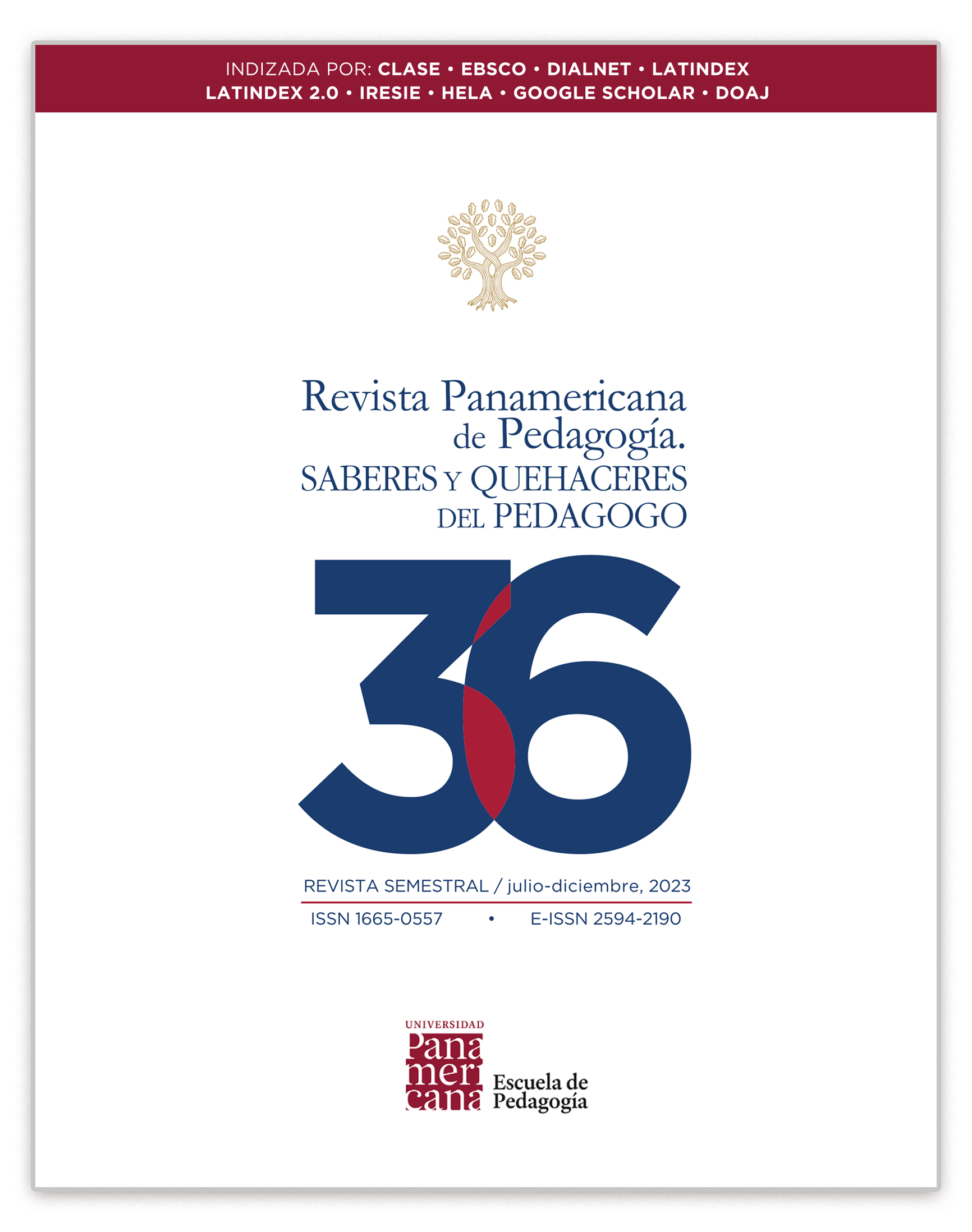Publicado 23-06-2023
Palabras clave
- pandemia,
- capital digital,
- educación superior mexicana,
- prácticas docentes y estudiantiles

Esta obra está bajo una licencia internacional Creative Commons Atribución-NoComercial-CompartirIgual 4.0.
Cómo citar
Resumen
Este artículo examina la dimensión tecnológica de la educación superior durante la pandemia del COVID-19. Es este un subsector con mayor capital digital que otros niveles educativos y que antes de la pandemia ya había incursionado, en mayor o menor medida, en aprendizaje y enseñanza, mediados por tecnologías de información y comunicación (TIC). Pese al apoyo de las instituciones educativas, ya sea en las plataformas o en la capacitación a profesores, la continuidad y calidad de la enseñanza dependió de la conectividad y dispositivos en los hogares de docentes y estudiantes. Bajo esta consideración, ¿qué TIC estuvieron presentes en la educación superior durante la crisis sanitaria? y ¿cuáles fueron los principales retos y aprendizajes para la educación superior?
El estudio se realizó a través de un cuestionario autoadministrado en línea de forma voluntaria, que mide la percepción de n=8,090 docentes y de n=39,417 estudiantes, en cuanto a la dimensión tecnológica en pandemia adscritos a instituciones de educación superior públicas y privadas de México. Los hallazgos apuntan a la utilización de recursos y herramientas digitales de una manera limitada y con un acceso insuficiente a Internet. Los actores principales –docentes y estudiantes– se han sentido, gran parte del tiempo, como sobrevivientes de una situación fuera de su control. Ya en post-pandemia hemos observado que las universidades son organizaciones que aprenden y corrigen, sobre la marcha, procesos educativos. Sin embargo, es apremiante, lograr en los estudiantes una mayor autonomía y responsabilidad de su propio aprendizaje.
Referencias
- Bao, W. (2020). COVID-19 and online teaching in higher education: A case study of Peking University. Human behavior and emerging technologies, 2(2), 113-115. https://doi.org/10.1002/hbe2.191
- Boggino, N. y Rosekrans, K. (2004). Investigación-Acción: Reflexión Crítica Sobre la Práctica Educativa. Homo Sapiens.
- Bourdieu, P. (1997). Capital Cultural, Escuela y Espacio Social. Siglo XXI Editores.
- Colmenares E., A. M., y Piñero M., M. L. (2008). La investigación acción. Una herramienta metodológica heurística para la comprensión y transformación de realidades y prácticas socio-educativas. Laurus, 14(27), 96-114. https://www.redalyc.org/articulo.oa?id=76111892006
- De Agüero Servín, M., Benavides Lara, M., Rendón Cazales, V., y Pompa Mansilla, M. (2020). Transición de los profesores de la UNAM a la educación remota de emergencia durante la pandemia. Informe general de resultados de la Coordinación de Universidad Abierta, Innovación Educativa y Educación a Distancia. UNAM. Recuperado el 4 de mayo de 2021, de https://cuaieed.unam.mx/publicaciones.php#revistas
- De Koff, J. P. (2021). Utilizing teaching technologies for higher education in a post-COVID-19 environment. Natural sciences education, 50(1). https://doi.org/10.1002/nse2.20032
- Heckathorn, D. D., & Cameron, C. B. (2017). Network Sampling: From Snowball and Multiplicity to Respondent-Driven Sampling. Annual Review of Sociology, 43(1), 101-119. 10.1146/annurev-soc-060116-053556
- Hodges, C., Moore, S., Lockee, B., Trust, T., & Bond, A. (2020). The difference between emergency remote teaching and online learning. Educause Review. Recuperado el 8 de enero de 2021 https://er.educause.edu/articles/2020/3/the-difference-between-emergency-remote-teaching-and-online-learning
- INSTITUTO NACIONAL DE ESTADÍSTICA Y GEOGRAFÍA (6 de marzo de 2018). Encuesta Nacional de Acceso a la Información Pública y Protección de Datos Personales 2016. https://www.inegi.org.mx/rnm/index.php/catalog/223/datafile/F25/V3358
- INTERNATIONAL SOCIETY FOR TECHNOLOGY IN EDUCATION (4 de mayo de 2021). Estándares ISTE. https://www.iste.org/es/iste-standards
- Mbunge, E., Fashoto, S. G., Akinnuwesi, B., Gurajena, C., Metfula, A. S., y Mashwama, P. (2020). COVID-19 Pandemic in Higher Education: Critical Role of Emerging Technologies in Zimbabwe. Social Science Research Network. https://doi.org/10.2139/ssrn.3743246
- Medina Gual, L. (Coord.). (2021). Educar durante la contingencia de la COVID 19 el caso de México: Un análisis desde las dimensiones pedagógica, tecnológica y socioemocional. Editorial SM.
- Molchanova, E., Kovtoniuk, K., y Savych, O. (2020). Covid-19 Presents New Challenges and Opportunities to Higher Education. Revista Romaneasca Pentru Educatie Multidimensionala, 12(2Sup1), 168-174. https://doi.org/10.18662/rrem/12.2Sup1/303
- Ponce López, J. (Coord.). (2020). Estado actual de las tecnologías de la información y la comunicación en las instituciones de educación superior en México: Estudio 2020. Asociación Nacional de Universidades e Instituciones de Educación Superior [ANUIES].
- Ragnedda, M. (2018). Conceptualizing digital capital. Telematics and Informatics, 35(8), 2366-2375. https://doi.org/10.1016/j.tele.2018.10.006
- Romero-Ivanova, C., Shaughnessy, M. F., Otto, L., Taylor, E. N., y Watson, E. L. (2020). Digital Practices & Applications in a Covid-19 Culture. Higher Education Studies, 10(3), 80. https://doi.org/10.5539/hes.v10n3p80
- SECRETARÍA DE EDUCACIÓN PÚBLICA (2020). Principales cifras del sistema educativo nacional 2019-2020. Recuperado el 6 de febrero de 2022, de https://www.planeacion.sep.gob.mx/Doc/estadistica_e_indicadores/principales_cifras/principales_cifras_2019_2020_bolsillo.pdf
- Turnbull, D., Chugh, R., & Luck, J. (2021). Transitioning to E-Learning during the COVID-19 pandemic: How have Higher Education Institutions responded to the challenge? Education and Information Technologies, 26(5), 6401-6419. https://doi.org/10.1007/s10639-021-10633-w
- Yan, Z., Gaspar, R., & Zhu, T. (2021). How humans behave with emerging technologies during the COVID -19 pandemic? Human behavior and emerging technologies, 3(1), 5-7. https://doi.org/10.1002/hbe2.249






